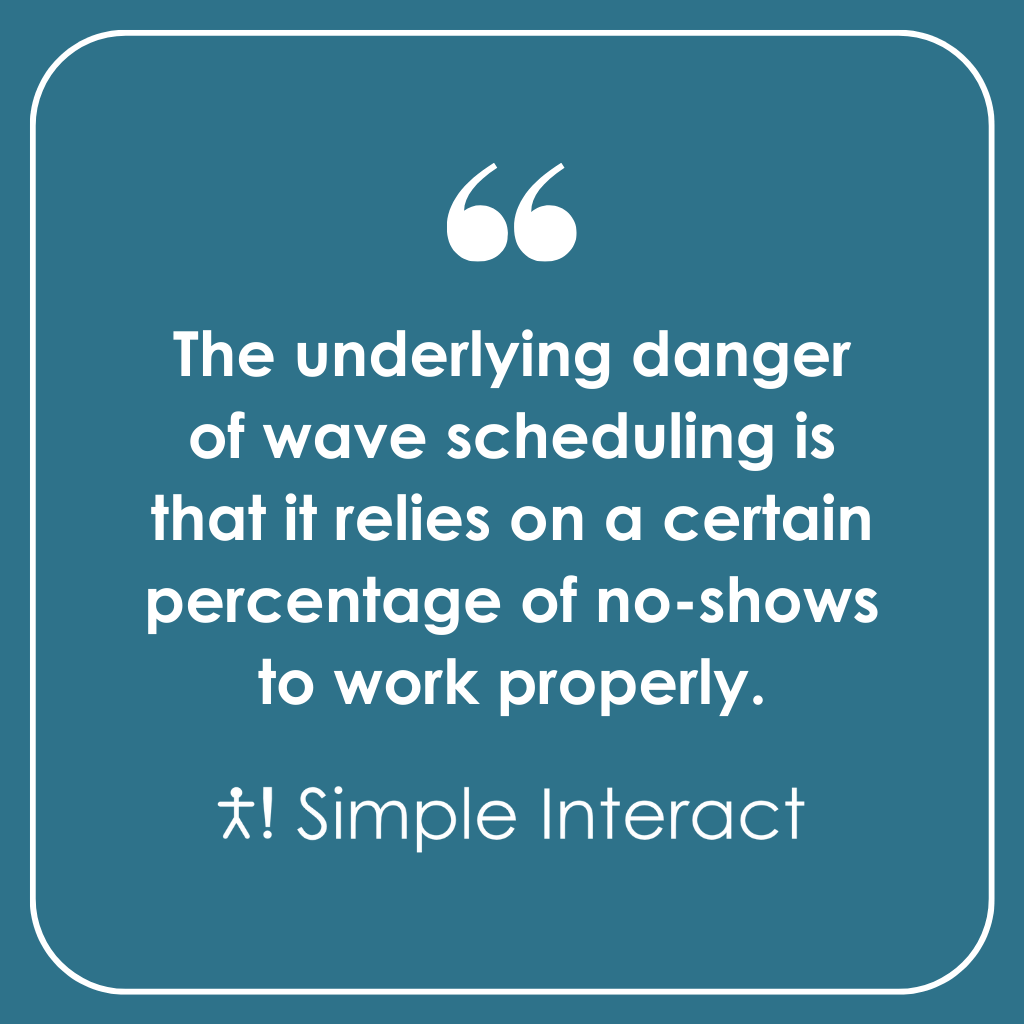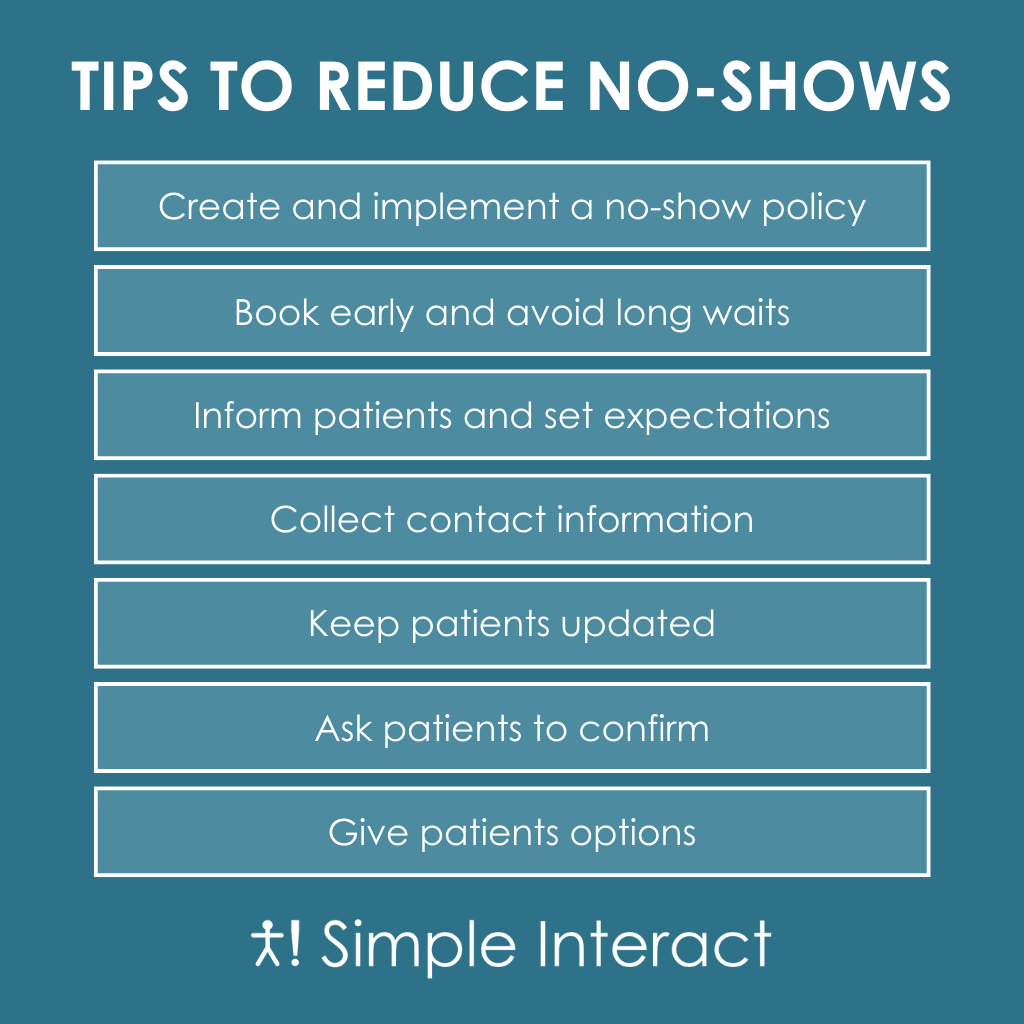What Is Wave Scheduling and Can It Really Make Your Practice More Efficient?

A no-show or two. Some last-minute cancellations. An emergency walk-in. Any of these scenarios can knock your schedule off track.
Medical facilities have traditionally relied on time-specific appointment scheduling: Every patient receives a specific-length time slot based on the nature of their visit.
But time-bound scheduling offers zero flexibility. If the office must suddenly accommodate an emergency visit, the rest of the day’s schedule becomes disordered. And if a patient or two doesn’t show up, you have the other extreme – staff and providers with time on their hands.
Wave scheduling has become popular as a way to prevent waiting room delays, manage patient flow, and improve practice efficiency. But does wave scheduling (or one of its variations) effectively solve the problem? Let’s consider a couple of approaches.
What Is Wave Scheduling?
How it works
The practice schedules a small group of patients to be seen within a particular time window. The physician sees each patient in the order they arrive within that window (in “waves”), and one patient’s appointment may partially overlap another’s.
What to watch out for
The underlying danger of wave scheduling is that it relies on a certain percentage of no-shows to work properly.
If multiple (or all) patients in a wave happen to show up at the same time, check-in becomes a stressful nightmare for front desk staff. Patients may also become frustrated if they realize their wait time is due to sharing an appointment slot with someone else.
Further, wave scheduling isn’t a simple, straightforward endeavor for your staff, and can contribute to overwhelm (and turnover). It requires significant training to get right, and its complexity increases alongside the size and busyness of the practice.

What Is Modified Wave Scheduling?
How it works
In this variation on wave scheduling, a practice schedules patients for a portion of an hour.
The rest of the hour is set aside to handle potential scenarios such as an appointment that runs long, an unscheduled walk-in, or a patient arriving well ahead of their appointment time.
What to watch out for
In this scenario, when patients cancel or fail to show up, you’re left with gaps of unused time that could have been allotted to other patients.
If those gaps become routine, they leave your staff and providers underutilized, which translates to a loss of productivity and revenue.
The Real Issue: No-Shows and Cancellations
Wave scheduling and modified wave scheduling are both helpful tools for managing scheduling problems. However, you’ll see much better results if you also address the root of the issue: no-shows and cancellations.
By focusing on reducing no-shows and filling openings caused by cancellations, you stabilize your facility’s schedule and minimize the need for double- or triple-booking appointment slots with wave scheduling. From there, you can make good use of modified wave scheduling to support a smaller number of no-shows and cancellations and the occasional emergency.
To fill canceled appointment slots, we advise implementing an automated feature that detects newly available slots, scans your schedule for similar future appointments, and offers those patients an opportunity to move their appointments up. It’s a great way to satisfy patients while preserving revenue and increasing efficiency.

To reduce no-shows, try these seven tips:
- Create and implement a no-show policy: Set patient expectations about your no-show policy and train them to value your staff’s time.
- Book early and avoid long waits: Lock in an appointment date as soon as the patient reaches out. However, try not to schedule more than one month out from the appointment date, so the patient doesn’t forget.
- Inform patients and set expectations:At scheduling, outline the type of pre-appointment communications the patient should expect to receive from your office. Also, inform them of your no-show policy and any appointment-related expectations.
- Collect contact information: Gather or verify current email and cell phone information for every patient, pre-appointment.
- Keep patients updated: Send out a consistent, coordinated, recognizable series of pre-visit notices and instructions.
- Ask patients to confirm: Closer to appointment day, a confirmation message serves as both an appointment reminder and a request for commitment. (And a same-day appointment reminder with navigation instructions is extra effective.)
- Give patients options: In your messaging, present clear options for patients to cancel or reschedule their appointments if needed.
The Takeaway
In an ideal world, patients would never cancel or forget an appointment. Realistically, of course, memories lapse and impediments arise, so we have to plan for the imperfect.
Simple Interact can help you reduce no-shows and automate the scheduling process to fill canceled appointments. By managing these essentials carefully, your practice can cut down on wait times, deliver greater patient satisfaction, and increase overall efficiency.
Reach out to Simple Interact for a chat or a demo.

Ravi Kalidindi is the Founder and CEO of Simple Interact, a leading Front Office Automation company that helps healthcare facilities across the United States run more efficiently and profitably by boosting staff productivity, reducing provider burnout, and elevating the patient experience. Customers view Ravi as a trusted partner who can quickly comprehend business problems and suggest “keep it simple” solutions that are effective and easier to maintain over time.
Recent Posts
- The Benefits of Using 2-Way SMS Chat for Healthcare Communication
- 2-Way SMS vs. Live Chat: Which Is Best for Bi-Directional Patient Communication?
- Simple Interact Earns A+ Satisfaction Ratings in KLAS Report
- Boosting Healthcare Staff Productivity With a Shared Inbox Dashboard
- Healthcare SMS: What Metrics to Track in Your 2-Way SMS
Categories
Archives
- February 2025
- June 2024
- May 2024
- April 2024
- March 2024
- February 2024
- January 2024
- December 2023
- November 2023
- October 2023
- September 2023
- August 2023
- July 2023
- June 2023
- May 2023
- April 2023
- March 2023
- February 2023
- January 2023
- December 2022
- November 2022
- October 2022
- September 2022
- August 2022
- July 2021
- December 2020
- May 2020
- March 2020
- June 2016